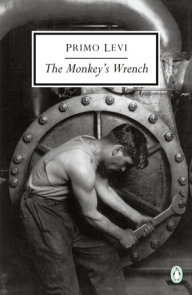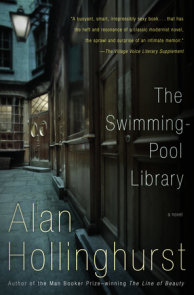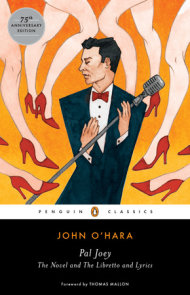READERS GUIDE
Questions and Topics for Discussion
INTRODUCTION
The possibilities for self-creation, material success, and absolute freedom are the basis of a powerful American myth, one that can just as easily destroy as empower those who embrace it. A long line of literary and historical figures, going back at least to Benjamin Franklin, gives us insight into this myth. Because we are a nation of immigrants whose institutions aim to make the circumstances of birth a mere starting point rather than a predictor of our fate, our capacity to invent ourselves is as limitless as our imagination. Without the practical barriers imposed by a rigid class system, vast wealth becomes not only a possibility but a measure of one’s inner worth; if we can’t play the game well enough to win, the fault doesn’t lie in the game. Our democratic system of government promises freedom from political oppression, but this freedom can encourage us to resist societal restrictions. A democratic government is responsible to its citizens, sometimes fostering the notion that they can reap the benefits of community while being responsible to no one but themselves.
Tommy Wilhelm in Seize the Day is both inspired and burdened by the American myth of success. At the age of twenty, he changes his name from Wilky Adler to Tommy Wilhelm, a name signifying the person he dreams of becoming. He thereby recalls James Gatz, who by calling himself Jay Gatsby thinks he can conjure up the man Daisy Buchanan will find irresistible. Unlike Gatsby, however, Wilhelm has not fled his past; he confronts it daily through his father, who still calls him Wilky. Wilhelm has “never . . . succeeded in feeling like Tommy, and in his soul had always remained Wilky” (p. 25). But he remains optimistic, though the distance between the man he is and the man he aspires to be is an endless source of despair.
Wilhelm’s financial troubles have more than practical implications. He feels that “everyone was supposed to have money” (p. 30), and his conversations with Dr. Tamkin strengthen his belief that with just a modest amount of will and talent, he could rid himself of financial worry. Tamkin assures Wilhelm that it will be “easy” for him to make much more in the market than the fifteen thousand he needs. Just as Wilhelm believes that he will one day become the person his name represents, so he clings to the hope that easy money awaits him. He assumes that his father would accept him if he had more money. Like Willy Loman, Wilhelm links his self-worth to his financial situation. If it really is easy to have more money than one needs, then financial failure must result from some character flaw.
Having quit his longtime job, left his wife and children, and taken a room in a residential hotel, Wilhelm seems intent on unburdening himself of the attachments and responsibilities that limit his freedom. He shares with Huck Finn the belief that personal autonomy somehow leads to personal fulfillment. But he is far from content when the story begins, sensing that “a huge trouble long presaged but till now formless was due” (p. 4). Wilhelm is bewildered by the fact that he has gone to such lengths to set himself free yet still feels trapped. Images of confinement proliferate. Beneath them is Wilhelm’s desperate loneliness. Tamkin’s assertion that we are all slaves to our “pretender souls” only further confuses the issue for Wilhelm. Is freedom a state of mind, rather than a description of external conditions? He cannot be sure, just as he can never be sure if Tamkin’s pronouncements are revelation or simply a means by which Tamkin gets what he wants.
Bellow explores these themes within a tight structure that gives Seize the Day (1956) a formal resemblance to his first two novels, Dangling Man (1944) and The Victim (1947). The Adventures of Augie March (1953) heralded a new expansiveness in Bellow’s fiction, against which Seize the Day would appear an exception. But the novella’s comedy is in keeping with Augie March and, in fact, much of Bellow’s later work. Seize the Day, which looks both backward and forward, occupies a unique place in Bellow’s career; it is also a powerful commentary on distinctly American ideals.
ABOUT SAUL BELLOW
Saul Bellow was born to Russian immigrant parents in a suburb of Montreal in 1915. His family moved to Chicago in 1924. Before leaving for Paris on a Guggenheim Fellowship in 1943, he taught at a teacher training college and worked for the editorial department of Encyclopaedia Britannica. He served in the Merchant Marine during World War II.
Bellow’s first two novels, Dangling Man (1944) and The Victim (1947), attracted a small following, but it was his next novel, The Adventures of Augie March (1953), that put Bellow on the literary map. The style and structure of the novel, a freewheeling picaresque comedy, signaled a dramatic shift in American fiction and won Bellow the first of three National Book Awards.
During the 1967 Arab-Israeli conflict, Bellow served as a war correspondent for Newsday. He spent most of his teaching career at the University of Chicago. Bellow’s other works of fiction include Henderson the Rain King (1959), Herzog (1964),Mr. Sammler’s Planet (1970), and Humboldt’s Gift (1975, winner of the Pulitzer Prize). His most recent book is Ravelstein(2000). Bellow was awarded the Nobel Prize in Literature in 1976.
DISCUSSION QUESTIONS
For Further Reflection
Related Titles
Theodore Dreiser, Sister Carrie (1900)
Opposite the heroine of this novel stands Drouet, a traveling salesman whose worship of money and luxury blinds him to the paltriness of his dreams.
F. Scott Fitzgerald, The Great Gatsby (1925)
Fitzgerald’s novel is the consummate depiction of the American belief in the possibility of self-invention and its tragic potential.
Herman Melville, “Bartleby the Scrivener” (in Billy Budd and Other Stories) (1853)
The fiercely independent copyist of Melville’s classic story prefigures Wilhelm’s resistance to a society driven by money and the need to quantify.
Arthur Miller, Death of a Salesman (1949)
Willy Loman, the stark and deluded “drummer” trying to shore up the edifice of his life against a thankless career, embodies the elusiveness of the American dream.
Leo Tolstoy, “The Death of Ivan Ilyich” (in The Death of Ivan Ilyich and Other Stories) (1886)
This short story traces a dying man’s gradual realization of his spiritual essence as his social and physical being dissolve.




















